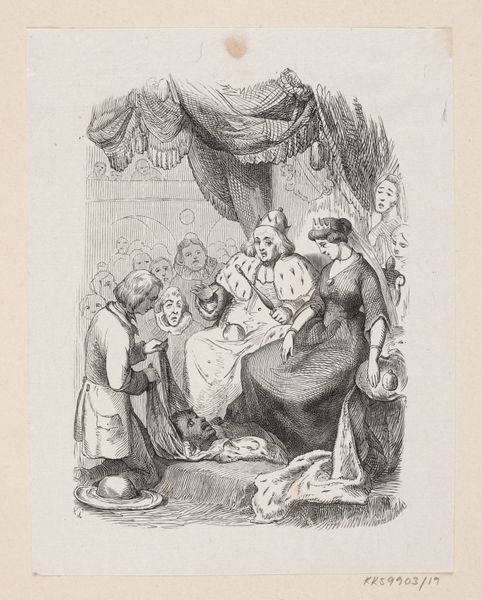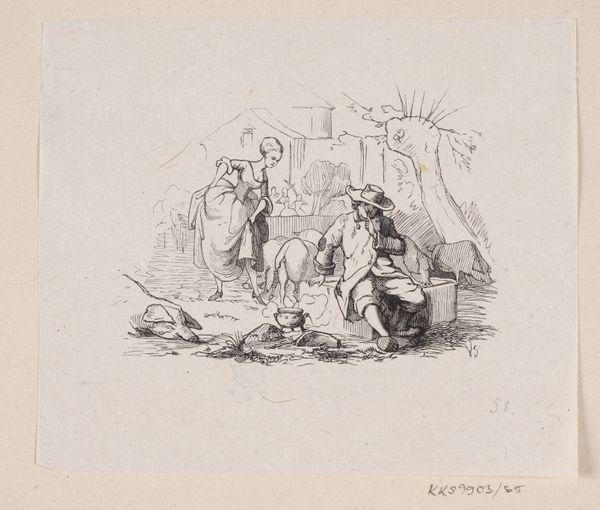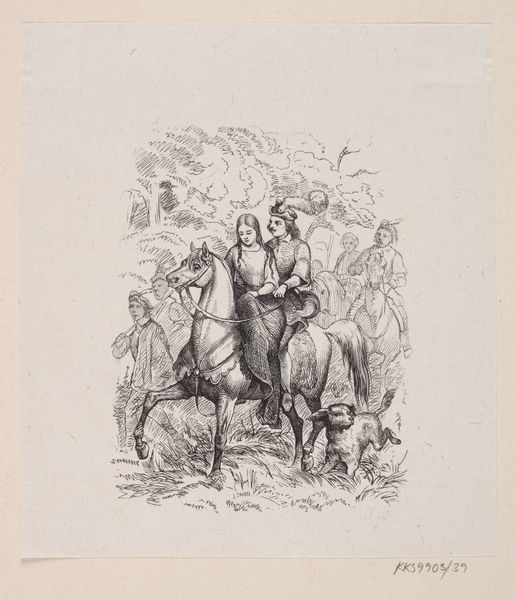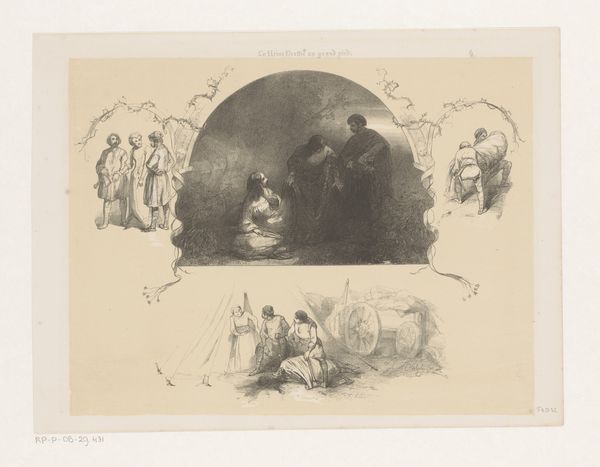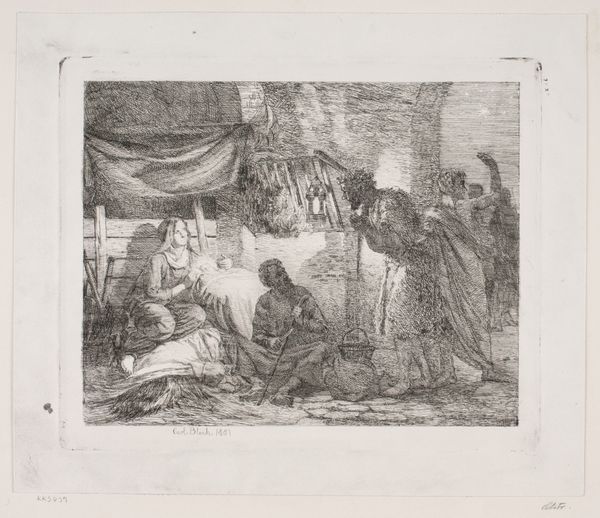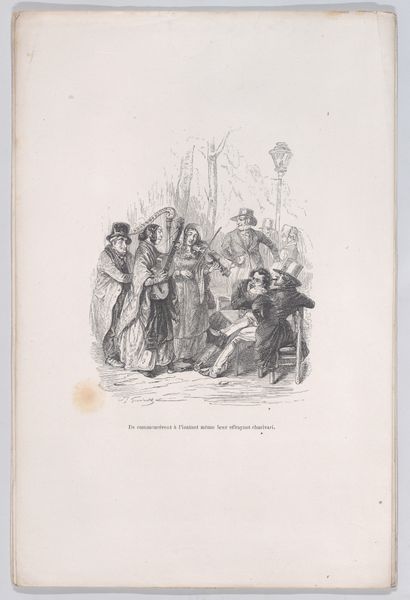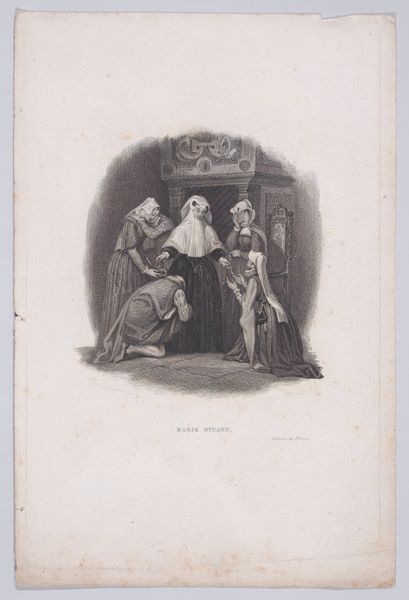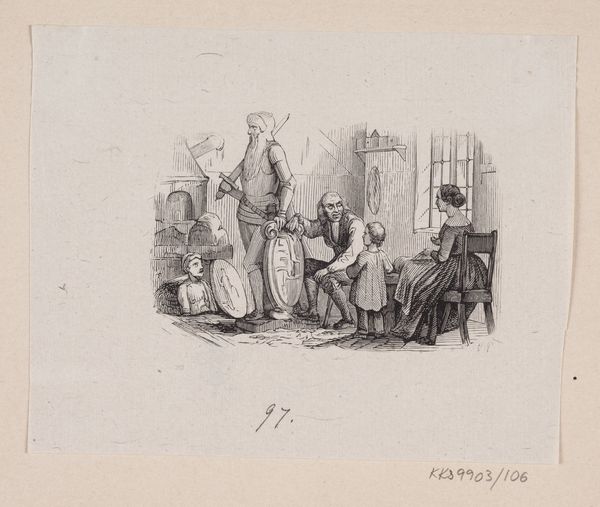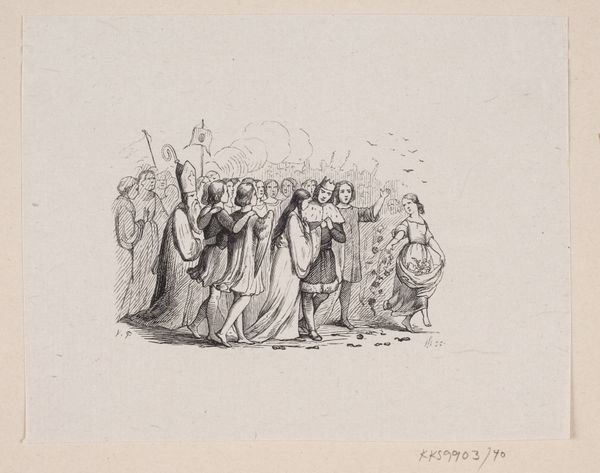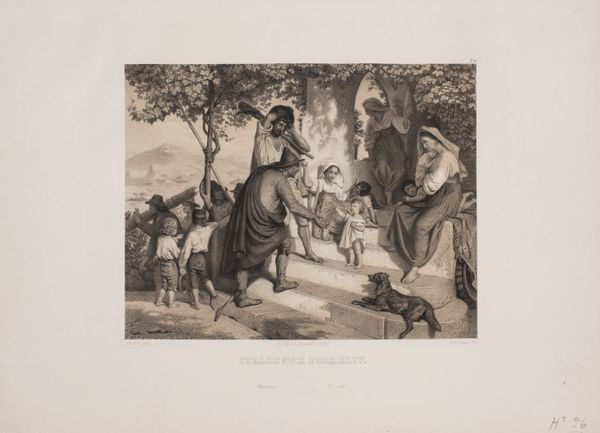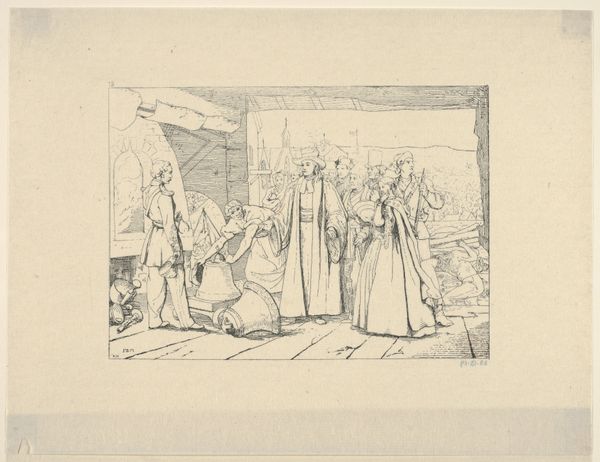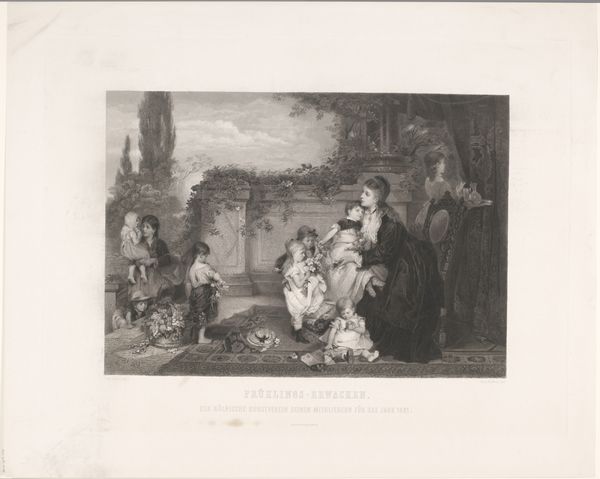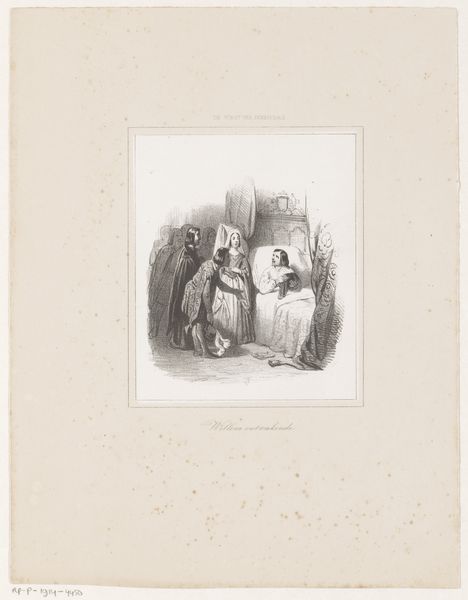
Illustration til "Klokken" i H.C. Andersen, "Eventyr og Historier", Bind 2 1870 - 1873
0:00
0:00
Dimensions: 110 mm (height) x 133 mm (width) (bladmaal)
Curator: Here we have a drawing by H.P. Hansen created between 1870 and 1873, titled "Illustration til \"Klokken\" i H.C. Andersen, \"Eventyr og Historier\", Bind 2", part of a collection illustrating Hans Christian Andersen’s tales. Editor: It’s a wonderfully detailed piece. At first glance, I’m struck by how intimate it feels. The soft lines create a sense of quiet observation, like we're peering into a very private, sheltered gathering. Curator: It’s an idyllic scene of what appears to be bourgeois life during that time. The choice of genre painting as a theme speaks to a cultural fascination with portraying everyday life within artistic contexts. Notice the arrangement of the figures; the pencil drawing emphasizes the social dynamic amongst them. Editor: The way they’re interacting does feel staged, very deliberately arranged. The clothing seems almost too clean. I can’t help but wonder, for whom are they performing this supposed “everyday life?” Are we really seeing daily life, or a constructed idea of leisure and class? It makes you question who has access to this idyllic imagery in art history. Curator: It's crucial to recognize that genre painting in this period often idealized social life. However, that doesn't mean we dismiss it. The careful details—clothing styles, the setting itself—offer valuable insights into the visual culture of the period. It shows us how social status was presented. Editor: Yes, absolutely, it reflects the way society perceived itself and wished to be perceived. How interesting would it be to contrast this image to works depicting laborers at this time? Whose stories do we elevate through art and whose get erased? What power does the artist have? These illustrations aren't simply beautiful images. They’re pieces within broader social, cultural and historical dialogues. Curator: Indeed. Exploring such historical representations allows us to better understand the politics embedded in visual imagery of the time. That said, Hansen created an illustration and not an independent work, his mission was, first and foremost, to depict Andersen’s tale in an understandable fashion. Editor: Considering how the image is being used, I wonder what Andersen’s "Klokken" is trying to reveal about this idyllic society. Perhaps these kinds of images of gatherings like this should be carefully examined so as not to further promote the erasure of groups underrepresented at the time.
Comments
No comments
Be the first to comment and join the conversation on the ultimate creative platform.
